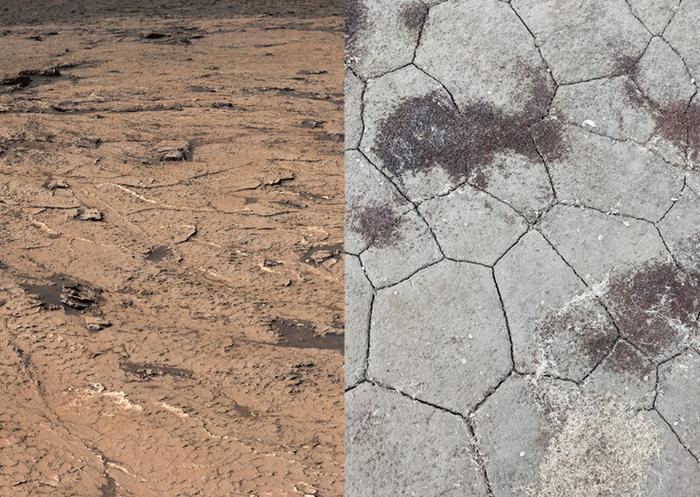Recent findings from the Curiosity Rover unveil clues about climate patterns on early Mars, revealing ancient fluctuations in the planet’s climate
Mud cracks suggest high-frequency wet-dry cycles, hinting at seasonal weather or flash floods. Published in Nature, this research unveils Mar’s history.
Unveiling climate patterns on early Mars
New observations from the Curiosity Rover depict mature mud cracks, shedding light on Mar’s water history. Principal investigator Nina Lanza highlights the significance of these cracks as a glimpse into Mars’ evolution from a warm, wet planet to its current arid state.
Evidence of ancient fluctuations on Mars
The research team discovered evolving mud crack patterns in a sulfate-rich environment, indicating changing drying processes.
This unveils episodic water presence on Mars, where liquid water appeared, evaporated, and reoccurred, shaping polygonal mud cracks.
Comparing Earth’s mud crack formations, the Curiosity Rover identified Y-shaped patterns formed by wetting and drying cycles. Shallow mud cracks, possibly due to seasonal or flash flood cycles, suggest a Mars once conducive to life with Earth-like wet climate and chemical reactions.

Does Mars have a habitat for life?
Scientists posit that Mars’ wet-dry cycles were conducive to forming polymeric molecules vital for life. Wet periods brought molecules together, while dry periods facilitated reactions, enhancing the chance of complex molecule formation.
These findings hint at the potential for past life on Mars.
Published in Nature, the “Sustained wet-dry cycling on early Mars” paper provides insights into Mars’ climatic history. Supported by NASA’s Mars Exploration Program and CNES in France, this research advances our understanding of Mars’ transformation and its potential to have harboured life.
The Red Planet has captivated curiosity
Mars, often referred to as the “Red Planet,” has captivated scientific curiosity for decades due to its potential as a harbinger of past or present extraterrestrial life. The planet’s geological features, including ancient river valleys and lakebeds, hint at a history of liquid water on its surface.
The Curiosity Rover, launched by NASA in 2011, has been a vital tool in this endeavor, exploring Mars’ Gale Crater region. This research has unveiled evidence of long-term wet environments in the form of ancient lakes, and now, the analysis of mud cracks further contributes to our understanding of Mars’ climatic history and the potential conditions for life to have emerged.











